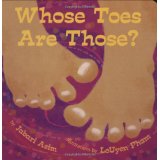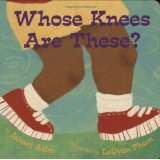 A slender and wiggly thread divides contrariness from being true to oneself. As our kids learn to discern the difference, we parents must deal with the confusion, frustration and—Dare we say it?—the irritation. Teaching our kids how to think for themselves, choose well and not follow the crowd takes patience and practice.
A slender and wiggly thread divides contrariness from being true to oneself. As our kids learn to discern the difference, we parents must deal with the confusion, frustration and—Dare we say it?—the irritation. Teaching our kids how to think for themselves, choose well and not follow the crowd takes patience and practice.
Lots. And. Lots. Of. Patience. And. Practice.
Theirs and ours!
This requires us as parents to encourage kids to explore, make choices–and mistakes–so they can discover their talents, manage their emotions and, nurture resilience and perseverance.
This post will review several picture books that focus on the inherent conflict between conforming and standing out in the crowd. A tall order for a simple picture book, right? But this group accomplishes the task with humor and fun.
Little Pea and Little Oink, both written by Amy Krouse Rosenthal and illustrated by Jen Corace invert the “normal” behavioral expectations children face. Little Pea must eat his candy–such a trial!–before his parents allow him to savor his vegetables! How’s that for a backwards and fun switcheroo? Kids will delight in this silly twist.
Five stars ∗∗∗∗∗
 Amy Krouse Rosenthal reprises a similar premise in Little Oink which features a neatnik pig who yearns to leave the mandatory messiness behind and settle into the comforting refuge of his spic-and-span tree house. (Sounds inviting and positively zen, doesn’t it?)
Amy Krouse Rosenthal reprises a similar premise in Little Oink which features a neatnik pig who yearns to leave the mandatory messiness behind and settle into the comforting refuge of his spic-and-span tree house. (Sounds inviting and positively zen, doesn’t it?)
Most everyone yearns to fit in. While compromise and flexibility have their place, some kids feel compelled to sacrifice themselves so others will accept them. Kids must learn to set and hold boundaries about themselves and know when they must stand true and unchanged.
Five stars ∗∗∗∗∗
 Spots in a Box by Helen Ward tells of a guinea fowl who lacks any spots which is disastrous, if you’re a guinea fowl. He can’t fit in and feels “made him odd/ cause the others had lots.” Young readers know what it feels like to be odd one out, so they can easily identify with the story line. The young fowl creates a solution–he ends out a letter asking for others to send him some spots. His request yields some unexpected and fun results. Fowl comes to understand that the best way to attract friends, is to be content with himself. Five stars ∗∗∗∗∗
Spots in a Box by Helen Ward tells of a guinea fowl who lacks any spots which is disastrous, if you’re a guinea fowl. He can’t fit in and feels “made him odd/ cause the others had lots.” Young readers know what it feels like to be odd one out, so they can easily identify with the story line. The young fowl creates a solution–he ends out a letter asking for others to send him some spots. His request yields some unexpected and fun results. Fowl comes to understand that the best way to attract friends, is to be content with himself. Five stars ∗∗∗∗∗
 AQ Lens: Adopted children consistently report feeling “othered”, like they don’t quite fit in their families, circles of friends, classrooms, etc. It is essential that these feelings be validated, not dismissed or minimized. It is equally important that our kids experience the richness and joy that results when everything and everyone is not cookie-cutter-identical.
AQ Lens: Adopted children consistently report feeling “othered”, like they don’t quite fit in their families, circles of friends, classrooms, etc. It is essential that these feelings be validated, not dismissed or minimized. It is equally important that our kids experience the richness and joy that results when everything and everyone is not cookie-cutter-identical.
Books like those included in this post help kids see the value in being comfortable being themselves. These books also invite them to wonder what might happen if things unfolded in unexpected and unique ways.
Read more about adoptees feeling “othered.”






















